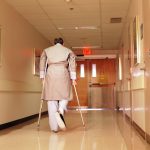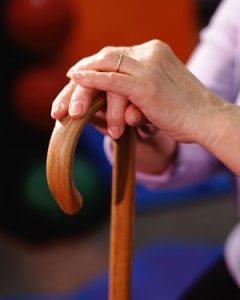Risk factors for falls in nursing homes
 The nurses at Med League frequently got calls from attorneys about patients who fell within a healthcare facility. The attorney was looking for a well-qualified expert to review the case. Hip fractures or head injuries are often the medical consequences of these falls. The damages are often not in question. The attorney is usually asking an LNC for a nursing expert to determine if the standard of care was followed.
The nurses at Med League frequently got calls from attorneys about patients who fell within a healthcare facility. The attorney was looking for a well-qualified expert to review the case. Hip fractures or head injuries are often the medical consequences of these falls. The damages are often not in question. The attorney is usually asking an LNC for a nursing expert to determine if the standard of care was followed.
Risk Factors for Falls in Nursing Homes
The assessment of fall risk is the responsibility of medical, nursing, and rehabilitation staff of the nursing home. Every nursing home resident is to be evaluated with the MDS (Minimum Data Set) to identify risk factors for falls, among other things. Additionally, a facility (or chain) may have its own fall risk assessment tool and a specific policy and procedure describing its use. Most homes will have a fall assessment tool as part of its nursing or rehabilitation (physical and/or occupational) therapy admission evaluation.
Note that fall risk assessment is performed as a screening measure (primary level of prevention) for all residents admitted to a nursing home facility (to detect and modify existing risks to fall). The staff repeat is as part of a post fall assessment.
Although there are numerous published fall risk assessment tools, there is no single tool that is considered “standard” in the nursing home.
Although some falls in nursing homes may be isolated events, most residents who have fallen should have a thorough post-fall assessment. This is especially necessary for those with a history of recurrent falls, since a history of falls is identified as a major risk factor for subsequent falls.
Discovery tip: Does the facility have fall risk assessment tools and separate post-fall assessment tools for evaluation of the falling older adult?
Risk factors
An essential aspect of any fall assessment tool is the consideration of risk factors for injurious falls. See below for a list of risk factors that should prompt a thorough evaluation and plan of care.
Circumstances of falls in nursing homes
- New admission to nursing home
- Recent transfer from hospital or other setting
- Recent transfer from another unit or room
- Responding to bladder or bowel urgency
- Attempting to remove a physical restraint
- Climbing over or around side rails
- History of recurrent falls
Intrinsic Factors that Lead to Falls in Nursing Homes
- Functional
- Loss of leg or arm movement
- Unilateral (one-sided) weakness
- Recent, rapid decline in functional status (ability to care oneself)
- Musculoskeletal
- Arthritis
- Osteoporosis
- History of fracture
- Post-amputation
Neuro-muscular Risk Factors
- Stroke
- Parkinson’s disease
Sensory

- Impaired vision
- Impaired hearing
- Dizziness
- Vertigo
- Polyneuropathy (reduced sensation of extremities) of diabetes, peripheral vascular disease or alcoholism
- Pain, especially of joints
- Psychiatric
- Delirium (often indicative of underlying, acute, physical illness)
- Dementia
- Depression
- Acute illness
- Infection
- Myocardial infarction
Extrinsic Factors
- Medications
- Polypharmacy
- Cardiac, Antihypertensives, and diuretics
- Psychoactive
- Sedatives, anti-anxiety agents
- Benzodiazapines
- Valium
- Chloral hydrate
- Antidepressants
- Tricyclic antidepressants
- Selective serotonin-reuptake inhibitors
- Trazodone
- Antipsychotics
- Haldol
Environmental Hazards
- Slippery floors, especially from urine
- Glare from highly polished floors
- Absence of night lights
- Unstable furniture
- Low chairs without armrest support or seat back
- Low toilet seats without secure gab bars
- Assistive devices
- Wheelchair
- Walker
- Cane, especially if poorly maintained or not fitted properly to the individual resident’s size and needs
- Physical restraints, including side rails
Behavioral Factors
- Risk-taker personality or impulsive mobility (may be secondary to stroke or impaired cognition)
- Tendency to stand quickly, especially from bed or immediately after a meal
As you can see, there are multiple risk factors that affect falls in nursing homes. The standard of care requires the long term care nurse to consider these when assessing risk of falls.
